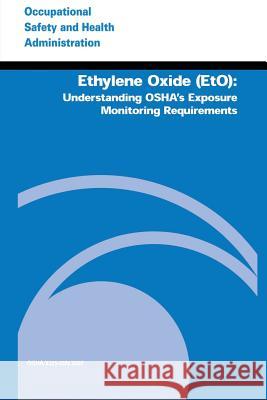Ethylene Oxide (EtO): Understanding OSHA's Exposure Monitoring Requirements » książka
Ethylene Oxide (EtO): Understanding OSHA's Exposure Monitoring Requirements
ISBN-13: 9781496187024 / Angielski / Miękka / 2014 / 32 str.
Ethylene Oxide (EtO): Understanding OSHA's Exposure Monitoring Requirements
ISBN-13: 9781496187024 / Angielski / Miękka / 2014 / 32 str.
(netto: 39,33 VAT: 5%)
Najniższa cena z 30 dni: 41,30
ok. 16-18 dni roboczych
Bez gwarancji dostawy przed świętami
Darmowa dostawa!
The purpose of this guidance document is to help employers understand how to monitor the quality of the air in workplaces where ethylene oxide (EtO) is processed, used, or handled. Air monitoring is an important activity that can help alert employers when unsafe levels of EtO are present in the air so that they can take steps to reduce employee exposure. EtO can be used more safely if appropriate precautions are taken and if equipment is adequately designed and maintained. This document: Clarifies the different types of EtO exposure monitoring, Lists and explains the exposure levels used by OSHA, Reviews the exposure monitoring requirements in OSHA's EtO rules, and Outlines the monitoring decisions that the employer needs to make when employees work in areas where EtO is present. EtO is used extensively by hospitals and other industries as a sterilizing agent. EtO is a colorless, odorless gas which is both flammable and highly reactive. Most importantly, you cannot smell EtO until it reaches levels that can cause serious harm to human health (NIOSH, 1989). Human and animal studies consistently show that EtO can be hazardous to human health. Short-term exposures to EtO can cause respiratory irritation and lung injury, shortness of breath, headache, nausea, vomiting, and diarrhea. Long-term exposure over many years may cause cancer, reproductive effects, genetic changes, and damage to the nervous system
Zawartość książki może nie spełniać oczekiwań – reklamacje nie obejmują treści, która mogła nie być redakcyjnie ani merytorycznie opracowana.











